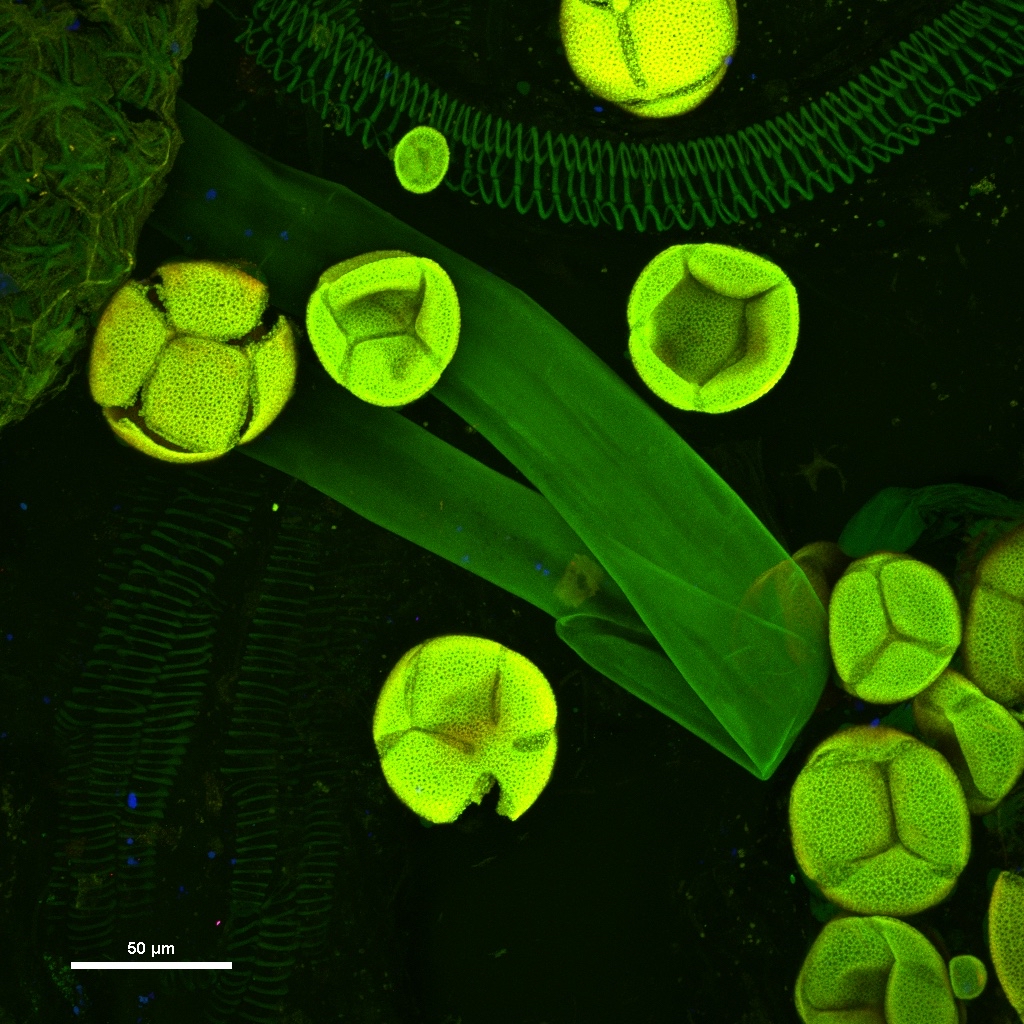Working from home during the COVID-19 crisis: Post #3
- Published
- in "The Process is the Product", all
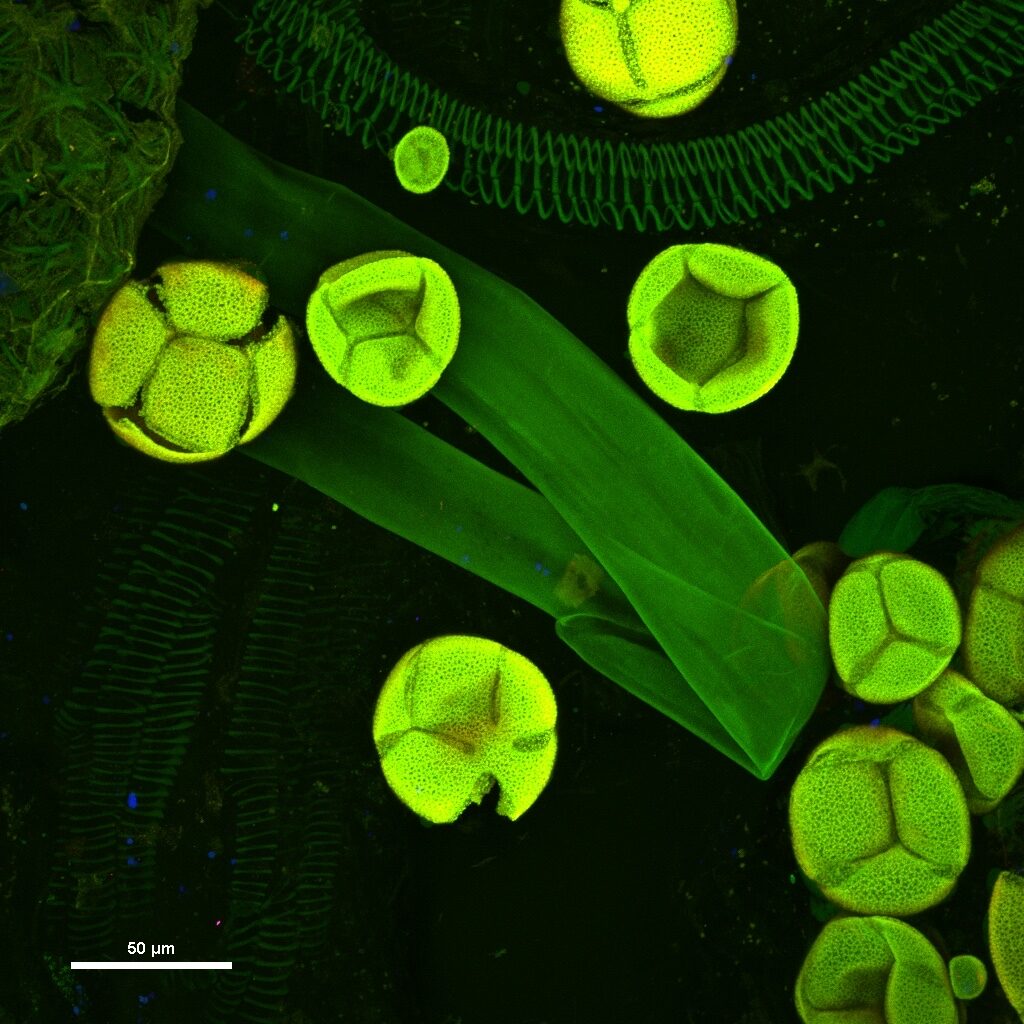
I continue to work from home on digital image collection projects that I outlined in my first post from this COVID-19 series, focusing now on a series of confocal miscroscopy images generated by two faculty at St. Lawrence University: Jill Pflugheber, Microscopy Specialist, and Dr. Steven F. White, Lewis Professor of Modern Languages and Literatures. This digital project grew out of an exhibition this past spring at the Richard F. Brush Art Gallery at SLU called Microcosms: A Homage to the Sacred Plants of the Americas. Here is the exhibition text panel that the two faculty wrote to accompany the printed images:
“Confocal microscopy, also known as confocal laser scanning microscopy, is a specialized optical imaging technique that provides contact-free, non-destructive measurements of three-dimensional shapes. In this case, plants considered sacred by indigenous groups of the Americas were scanned at St. Lawrence University’s microscopy and imaging center. The procedure gathers information from a narrow depth of field, while simultaneously eliminating out-of-focus glare, as well as permitting the creation of optical sections through biological samples. Images are built over time by gathering photons emitted from fluorescent chemical compounds naturally contained within the plants themselves, creating a vivid and precise colorimetric display.
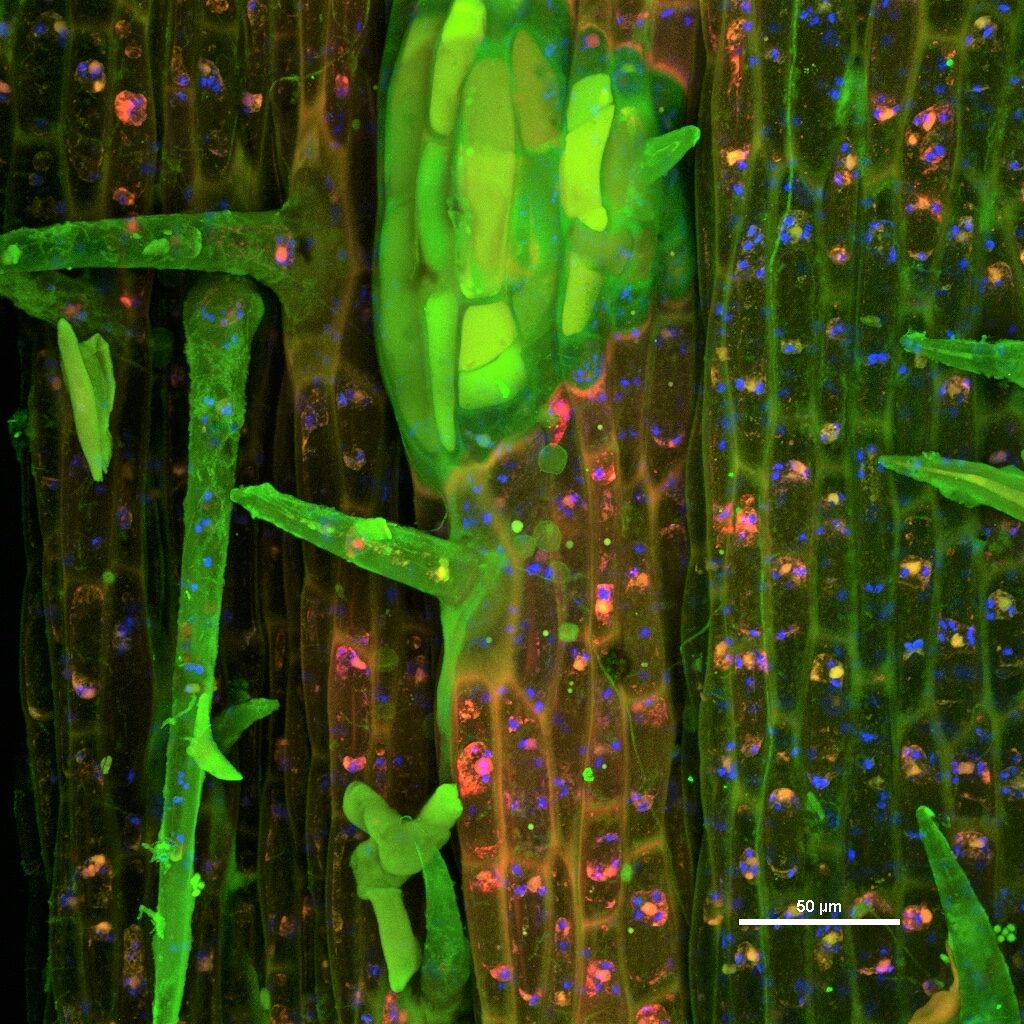
To pay homage to sacred plants revered by indigenous groups throughout the Americas is a way of honoring the entire world in a time of environmental emergency. The exhibition—at the juncture of art, technology, and science—magnifies life in ways that may alter how humans perceive other living entities from our shared and threatened biosphere in more egalitarian terms. The plants reveal themselves as 21st-century extensions of biomorphic forms that were the genesis of abstract works by artists such as Wassily Kandinsky and Paul Klee one hundred years previous. Some of the plants contain the most potent psychoactive agents on the planet and serve as intermediaries that have enabled native communities to communicate with their ancestors, wage war on the enemies of their land, conceptualize entire cosmogonies, and maintain a nearly impossible equilibrium. Perhaps each stoma, trichome, and patterned fragment of xylem and vascular tissue in these vital portraits is not only a way into previously unseen vegetal realms, but also a way out of our collective crisis.”
As a side note, Steven is co-editor of Ayahuasca Reader: Encounters with the Amazon’s Sacred Vine (Synergetic Press, 2018). The gallery has presented two other exhibitions based on Steven’s research in this area with world-renowned ethnobotanist Luis Eduardo Luna: Inner Visions: Sacred Plants, Art, and Spirituality in 2016 (+ press release), and Visions that the Plants Gave Us in 1999 (+ more info here).
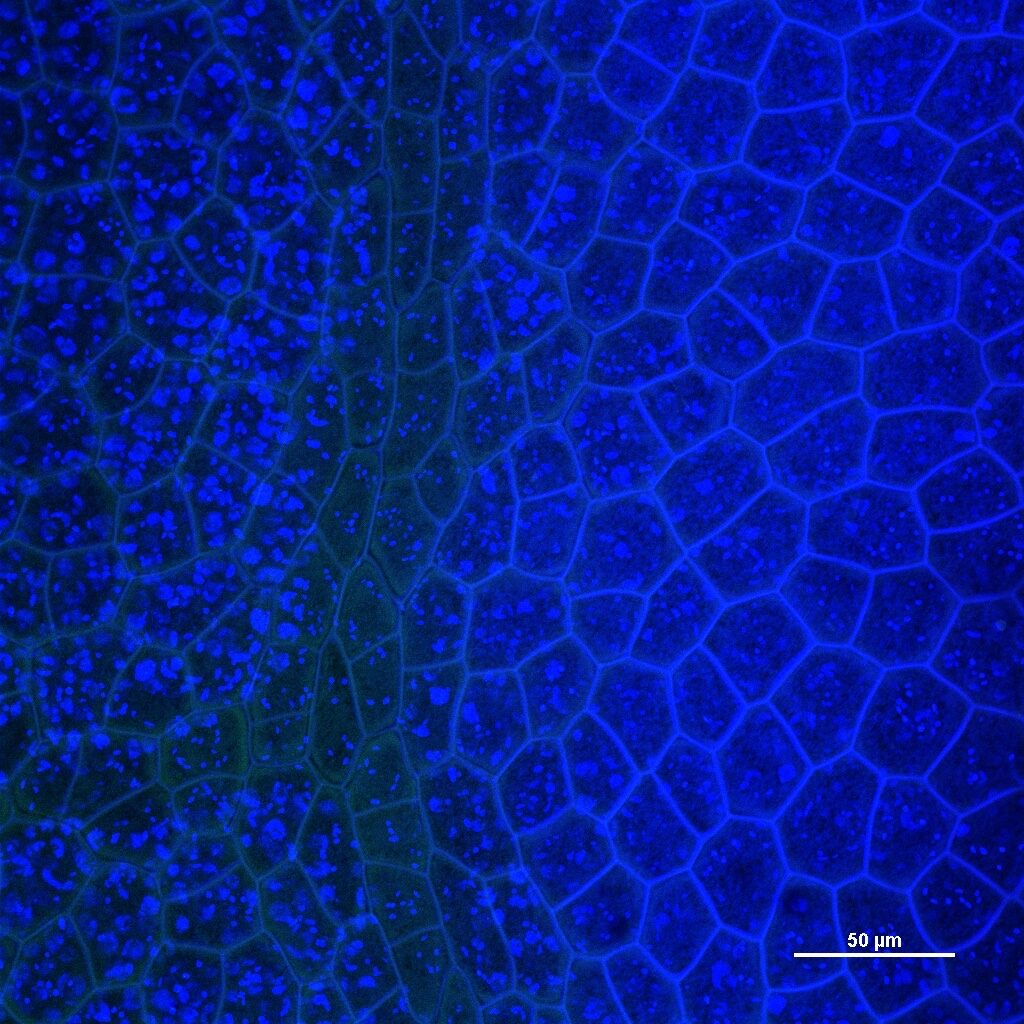
Creating metadata fields for this collection was also time-consuming for different reasons, but fun overall. The “data dictionary and cataloguing guide” that I created is listed at the end of this post, but here are some general points to make with regard to the work I’ve been doing:
- I finally figured out how to use RightsStatements.org most effectively for this and other digital image collections at SLU. From the website: “RightsStatements.org provides a set of standardized rights statements that can be used to communicate the copyright and re-use status of digital objects to the public. Our rights statements are supported by major aggregation platforms such as the Digital Public Library of America and Europeana. The rights statements have been designed with both human users and machine users (such as search engines) in mind and make use of semantic web technology.”
- I also figured out how to use the Creative Commons licenses most effectively for SLU digital image collections. This one was easy because the Microcosms images are copyright-protected by the two faculty.
- Our cataloguing platform, Jstor Forum, is more nimble now than when I created the Street Art Graphics digital archive in the platform’s predecessor, Shared Shelf, in 2015. (Sorry, but who comes up with these ridiculous platform names, lol?) There are many more “Linked Authority Fields” embedded within most metadata fields that link to several lists of terms, such as the Art & Architecture Thesaurus (AAT), the Library of Congress Subject Headings (LCSH), and the Thesaurus of Geographic Names (TGN)—some of which are listed on the Library of Congress’s full Linked Data Service website.
- Despite the funny name, I really like the Jstor Forum admin and cataloguing environments. Both are extremely user-friendly and intuitive, and the published collections emphasize the images in ways other platforms don’t. (I’m talking to you, ContentDM.)
Microcosms: Sacred Plants of the Americas
Data Dictionary and Cataloguing Guidelines
(with examples for peyote in this document)
Temporary album in Flickr: https://www.flickr.com/photos/slu-art-gallery/albums/72157713729253121
AAT = Art & Architecture Thesaurus
LCSH = Library of Congress Subject Headings
TGN = Thesaurus of Geographic Names
PLANT DETAILS (i.e., “work”)
1. Common Name: Linked Authority Field (AAT)
Common name of plant. Use Linked Authority Lists based on AAT and LCSH. [Accept multiple values.] Ex: Peyote
2. Genus: Linked Authority Field
Genus of plant. Use Linked Authority Lists based on AAT and LCSH. Ex: Lophophora
3. Species: Linked Authority Field
Species of plant. Use Linked Authority Lists based on AAT, LCSH, and “Microcosms: Species.” Ex: Lophophora williamsii
4. Indigenous Name: Linked Authority Field
Cultural names of the plant. Use Linked Authority Lists based on AAT, LCSH, and “Microcosms: Indigenous Names” (list based on Steven White’s exhibition labels). [Accept multiple values.]
5. Specimen Source: List Field
Person or institution that provided the plant or seed. List provided by Steven White. [Accept multiple values.] Possibly change this to Linked Authority Field?
6. Image View Description: Text Area
Text that describes the content and context of the work, including comments and an interpretation that may supplement, qualify, or explain the physical characteristics, subject, circumstances of creation or discovery, or other information about the work. (Jill Pflugheber to describe plant section.)
7. Subject: Linked Authority Field
Terms that identify, describe, and/or interpret what is depicted in and by a work. Use Linked Authority Fields based on AAT, LCSH, and TGN.
8. Culture (Linked Authority Field)
Name of the culture, people, or nationality from which the plant is used. Use Linked Authority Fields based on AAT and LCSH. [Accept multiple values.] Refer to exhibition labels that Steve supplied.
9. Ethnobotanical Use/Cultural Significance: Text Area
Dr. Steven White to write ~100 words. (Map to Description in Dublin Core.)
LOCATION OF PLANTS
10. Artstor Country: List Field (Required)
A type of “nationality” field, though not in adjectival form; country refers to the modern name of the country from which the artist came. A list of those currently in use by Artstor is provided. [Accept multiple values.]
11. Geographic Location: Linked Authority Field
Geographic location of the plant. Use Linked Authority Field based on TGN. [Accept multiple values.]
DATES OF CONFOCAL IMAGES
12. Image Date: Text Field
Date or range of dates associated with the particular view captured in the image. (Jill Pflugheber will provide acquisition dates.) Ex: 29 Mar 2020
13. Artstor Earliest Date: Number Field (Required)
Year that broadly delimits the beginning of an implied date span. Add five years from date of capture.
14. Artstor Latest Date: Number Field (Required)
Year that broadly delimits the end of an implied date span. Subtract five years from date of capture.
ABOUT THE CONFOCAL IMAGES
15. Artstor Classification: List Field (Required)
Term used to categorize a work by grouping it together with other works on the basis of similar characteristics, including materials, form, shape, function, etc. A list of the 16 terms accepted by Artstor is provided. Use: Science, Technology, and Industry
16. Work Type: Linked Authority Field (AAT)
Term or terms identifying the specific kind of object or work being described. Use Linked Authority Field based on Art and Architecture Thesaurus. Use “confocal microscopy” as default for all records.
17. Laser Excitation Wavelengths: Text Field (Default) (Map to Description)
Jill Pflugheber to provide. Use “488nm=green, 561nm=red, 640nm=blue” as default for all records.
OTHER
18. Repository: Text Field (Default)
The name and geographic location of the repository that is currently responsible for the work. Use “St. Lawrence University, Canton, NY (USA)” as default for all records.
19. SLU Project Coordinators: Text Field (Default)
Names and roles of individuals that played a role in the creation of the image. Use “Jill Pflugheber, Microscopy Specialist, and Dr. Steven White, Lewis Professor of Modern Languages and Literatures” as default for all records.
20. Notes: Text Area
Any additional misc. information to be shared publicly.
21. Local Notes: Text Area (Hidden)
Internal information not to be shared publicly. Field should be hidden but searchable.
22. Rights: Text Field
The copyright status of the digital object. Recommended best practice is to use a controlled statement from RightsStatements.org. Use “Image: Copyright 2020 by Jill Pflugheber and Dr. Steven F. White (Rights Statement – In Copyright http://rightsstatements.org/vocab/InC/1.0/)” as default for all records.
23. License: Text Field
The terms under which the digital object may be used by others. Recommended best practice is to use a controlled statement from CreativeCommons.org. Use “Use of this image is in accordance with Creative Commons by Attribution-NonCommercial-No Derivatives (CC BY-NC-ND)” as default for all records.
24. Original Filename: Text Field (Hidden)
Unique numeric or alpha numeric identification, usually a filename, of the original image from Jill Pflugheber. Field should be hidden but searchable.
25. Revised Filename: Text Field (Hidden)
Unique numeric or alpha numeric identification, usually a filename, of the revised image from Jo Skiff. Field should be hidden but searchable.
**NOTE: After the “Fields” are created, all of the fields and the order of the fields need to be re-created in the “Cataloging Form Fields” tab.
Useful websites
Jstor Global Plants (hoping to submit our collection to Jstor in addition to Artstor and DPLA)
Possibly NAPRALERT (requires registration approval)
Native American Ethnobotany Database
Entheology: Plants (for indigenous plant names and cultures)
USDA Natural Resources Conservation Service Culturally Significant Plants
USDA Natural Resources Conservation Service Classification
Useful Tropical Plants Database
DPLA and Wikimedia Commons
In other news, I took a webinar last week on April 21, 2020, sponsored by the Digital Public Library of America and the Wikimedia Foundation, that focused on increasing the discoverability and use of digital media. A system is being set up to upload images from DPLA into Wikimedia Commons that can then be inserted into Wikipedia pages, funded by a grant from the Alfred P. Sloan Foundation.
I’ve already done a little of this with I.W.W. “stickerettes” or “silent agitators” in the Street Art Graphics digital archive. This past year, for example, I uploaded images for the following Wikipedia pages: Silent agitators, “Black Cat” on Anarchist symbolism, “Scab” on Strikebreaker, and “Foundation of the Industrial Workers of the World” under Bill Haywood.
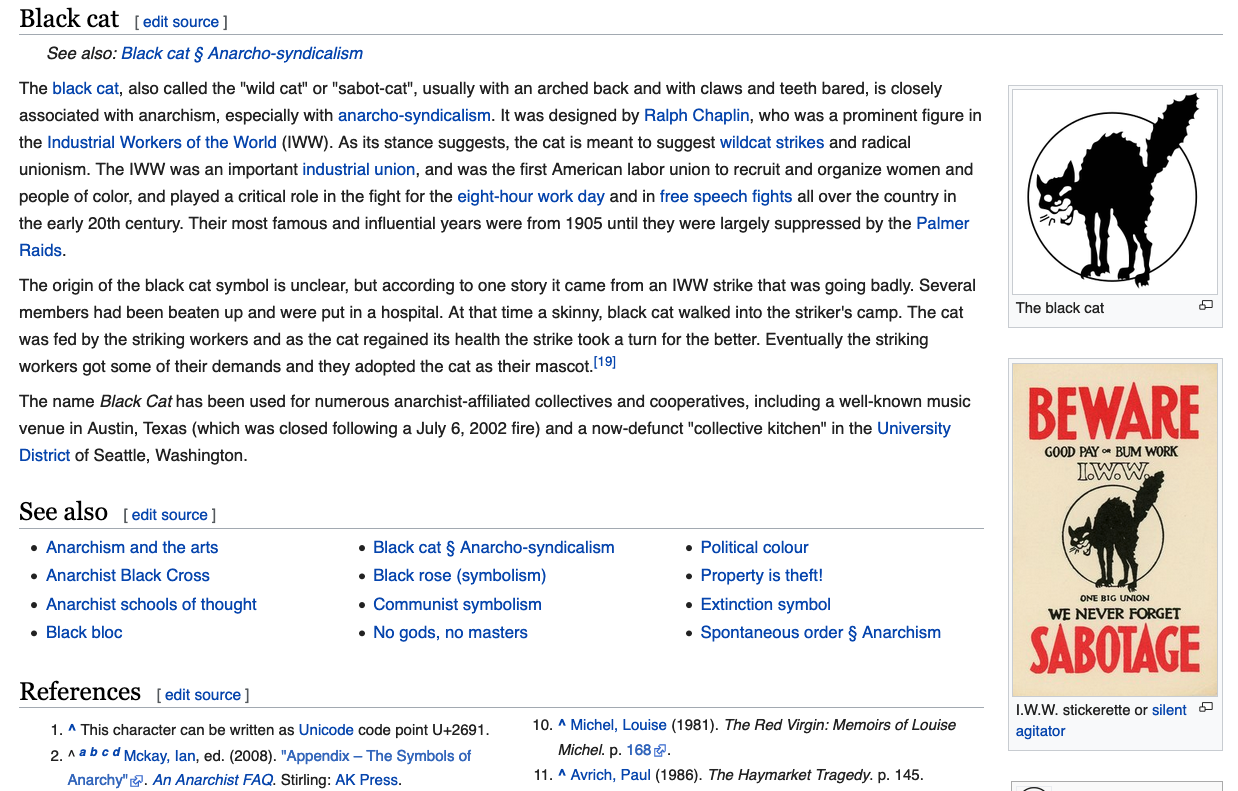
Anyhoo, I reached out to the webinar organizers and expressed my enthusiasm to participate in this endeavor. Given past support for the Street Art Graphics digital archive from the U.S. Council of Independent Colleges, I’m hoping they will contact me. Stay tuned!
